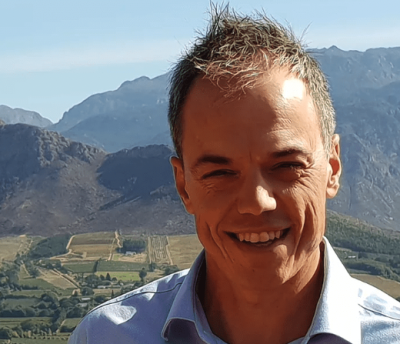VIP Meet & Greet
Welcome to Cape Town! Upon arrival you will be met at the door of the aircraft with your name on a paging board. Should your aircraft be directed to the apron and not the terminal building, you will be transported to the terminal by bus where your Colassal Aviapartner Meet & Greet representative will be waiting for you as you step off the plane.
Have your passports handy. You will be assisted through immigration, baggage, and customs. Then you will be met by a representative from Jarat Tours and transferred to The Andros Boutique Hotel (or similar), your accommodations for the next three (3) days.
**Please make sure to have your cell phone on in case either of the representatives need to contact you.
Traveler's Tip
You will find many ATM machines in the Arrivals area of the Cape Town airport. This is a great place to get some local "Rand" cash! (eg: R3000 = $150)
About Cape Town
Cape Town, a vibrant city situated on South Africa's southwestern tip, is renowned for its breathtaking natural beauty, notably Table Mountain's dramatic backdrop. The city's diverse cultural influences are reflected in its architecture, cuisine, and arts scene. Cape Town seamlessly blends trendy modern and old-world elegance, offering glamorous hotels, world-class dining, and stunning vistas alongside dynamic suburbs and vibrant nightlife. The city's Malay and African heritage is evident in its cuisine, traditions, and entertainment, while its architecture displays a strong Dutch, German, and English influence. Contemporary art is showcased in various galleries and modern boutique hotels, and wine bars and brandy tasting lounges cater to the fashionable set. Cape Town also provides a mix of outdoor activities, from hiking and surfing to exploring beautiful beaches, and boasts a rich history, including significant sites related to the apartheid era.
South Africa: Introduction
South Africa is famous for its incredible diversity, stunning landscapes, and rich culture. It is one of the great cultural meeting points of the African continent. This fact has been obscured by decades of racial segregation but is becoming increasingly apparent, especially in the country’s great cities. With its myriad of cultures and extreme disparities in wealth, South Africa is not an easy country to understand at first. After nearly two decades of non-racial democracy, the country is still searching for its identity and trying to heal the wounds from its troubled past. As you immerse yourself in its culture, you will quickly learn that South Africa truly is a country like no other—a place of striking beauty, stark contrasts, and exceptionally friendly, kind, and spirited people.
Geography
South Africa is the 25th largest country in the world, bordered by Namibia, Botswana, Zimbabwe, Mozambique, Swaziland, and Lesotho. Also, it has an extensive coastline bordered in the west by the Atlantic Ocean and to the south and southeast by the Indian Ocean. South Africa covers an area of approximately 470,900 square miles, making it roughly twice the size of France or three times the size of Germany. The country comprises nine provinces, which all vary substantially in several respects. The interior consists mainly of a flat plateau (rising from about 3,280 feet to 6,889 feet above sea level), and the areas next to the coast extend from 2,624 feet to sea level.
Situated on the southwestern coast, the Western Cape Province is home to the country’s oldest city and legislative capital, Cape Town (established in 1652). Vineyards thrive in the mild Mediterranean climate of the province, and white sandy beaches beckon tourists. Moving north to the Northern Cape, the surroundings become increasingly arid and sparsely populated, with broad and seemingly never-ending horizons. Over to the North West province, the landscape is dominated by grassland with a few hardy trees dotted about. The massive casino complex Sun City's evocative ‘lost city’ theme can also be found in this province. Situated almost precisely in the center of South Africa is the Free State province, where the judicial capital Bloemfontein can be seen, amongst a succession of flat plains. Moving south, one encounters the rugged coast of the Eastern Cape, also home to Tiffindell (the country’s only snow skiing resort). The Eastern Cape is also a hub for the automotive manufacturing industry, with access to harbors in Port Elizabeth and East London. Further north along the coast, KwaZulu-Natal province looms large. The tropical climate and abundant rainfall make the landscape lush and verdant. Inland from there, the rocky and mountainous Mpumalanga province beckons; a mainly agricultural area. Some of the oldest rocks on Earth may even be found in this area. Limpopo's northernmost province shares its name with the river that snakes and winds, forming the border between South Africa and its neighbors. The Kruger National Park can also be visited here to see the Big 5. Then there is the province of Gauteng, the most densely populated and urbanized area in South Africa. Pretoria, the administrative capital, and Johannesburg are the two most significant settlements in the province, which has the biggest population out of all the areas, even though it is, in fact, the smallest.
Demographics
The total population of South Africa is around 57 million, with the Gauteng province being the most populated (24% of the population lives here). KwaZulu-Natal is the next most populated province (18%), followed by the Eastern Cape (13%) and the Western Cape (11%). Gauteng (Johannesburg, Pretoria) and Western Cape (Cape Town) often stand out as the most developed provinces and enjoy the highest average household income levels. The Eastern Cape and Limpopo provinces are the poorest, with the lowest average household income.
Around 68% of South Africans live in urban areas. This figure constantly grows as people migrate from rural areas to cities for opportunities. Many fairly densely populated areas remain in rural and unindustrialized parts of the country. This is a lingering legacy of centuries of racial discrimination and segregation of the Apartheid-era government. Former Native Reserves and homelands/Bantustans were intended to segregate South Africa’s black population from ‘whites-only’ urban areas. The former Transkei and Ciskei homelands in the Eastern Cape are examples.
Ethnicity
Nelson Mandela referred to South Africa as the “Rainbow Nation” because of its racial diversity. The population of South Africa is one of the most complex and diverse in the world. Most South Africans classify themselves as Black African (79%). This population group, however, is not culturally or linguistically homogeneous. Major ethnic groups include the Zulu, Xhosa, Basotho (South Sotho), Bapedi (North Sotho), Venda, Tswana, Tsonga, Swazi, Khoikhoi, San people, and Ndebele, all of whom speak predominantly Bantu languages.
The Colored population comprises 8.8% of South Africa’s population, mainly in the Cape region. Colored is a term used for people of mixed racial descent in South Africa. Although many visitors might view the term as being politically incorrect, in South Africa, it is not a derogatory term and is not offensive. Colored people in South Africa descend from a combination of ethnic backgrounds, namely Indonesian, Malaysian, Indian, Malagasy, and Asian blood, the indigenous Khoisan (the Cape’s first inhabitants), white settlers, and black Africans.
Whites in South Africa comprise 8.4% of the population and are predominantly descendants of Dutch, German, French Huguenots, British, and other European settlers. Culturally and linguistically, they are divided into two groups, the Boers, who speak Afrikaans, and English-speaking groups, who are descended mainly from the British.
Indian South Africans/Asians comprise 2.5% of the total population. The majority of the Indian/Asian population are descendants from India, many of them descended from indentured workers brought in the nineteenth century to work on the sugar plantations of the eastern coastal area, then known as Natal (now known as KwaZulu-Natal).
Economy
South Africa has the second-largest economy in Africa (Nigeria has the largest) and the 41st-largest in the world. It is the only African country to be part of the G-20. Unlike most other African economies, which still rely heavily on mining and agriculture, South Africa is relatively diversified. The service, manufacturing, financial, and retail sectors comprise about half of GDP output. Mining and agriculture combined contribute less than 8%.
South Africa is considered a relatively industrialized nation, and based on GDP per capita, South Africa is classified as an upper-middle income economy by the World Bank. This, however, is incredibly misleading, as wealth distribution in the country is exceptionally skewed, and unemployment and poverty are rife. The unemployment rate is 27%, and thirty million people, or one out of every two, live below the poverty line. South Africa has the highest Gini coefficient in the world, meaning it has the most uneven Income distribution of any other country. Wealth is very much defined by racial groups, with White and Indian South Africans experiencing the highest levels of income, and Colored and Black South Africans bearing the brunt of unemployment and poverty.
The high levels of inequality are a result of the cruel and unjust apartheid-era government policies. However, the current government’s substandard education systems, rampant corruption from the highest levels, and bad economic policies have done little to alleviate the current inequality gap.
Dinner
Enjoy dinner tonight, on your own account, at the hotel or a local restaurant.
See the Cape Town restaurant recommendations attached to your itinerary.
Restaurant Recommendations for Cape Town
The Western Cape
South Africa's Western Cape is a captivating destination, its allure stemming from a rich tapestry of experiences catering to various interests. The renowned Winelands' picturesque vineyards and world-class wines offer a veritable paradise for those who delight in culinary pleasures, and the coastal regions tantalize taste buds with the freshest seafood imaginable. Local markets brim with a colorful array of produce, artisanal cheeses, and other delicacies, showcasing the region's bounty. Nature enthusiasts will be surrounded by the dramatic landscapes, from majestic mountains to the awe-inspiring spectacle of whale watching along the coast. The underwater world beckons with vibrant kelp forests teeming with marine life, inviting divers to discover their hidden wonders. Adventure seekers will find their hearts racing with a plethora of exhilarating activities. Paragliding offers a bird's-eye view of the breathtaking scenery, while surfers can ride the waves along the rugged coastline. The more daring can even embark on a thrilling shark cage diving experience, coming face-to-face with these magnificent creatures in their natural habitat. Culture buffs will be captivated by the region's rich history. From Cape Town's iconic Table Mountain to Walker Bay's Klipgat Cave, there is no shortage of cultural experiences to enjoy.

















